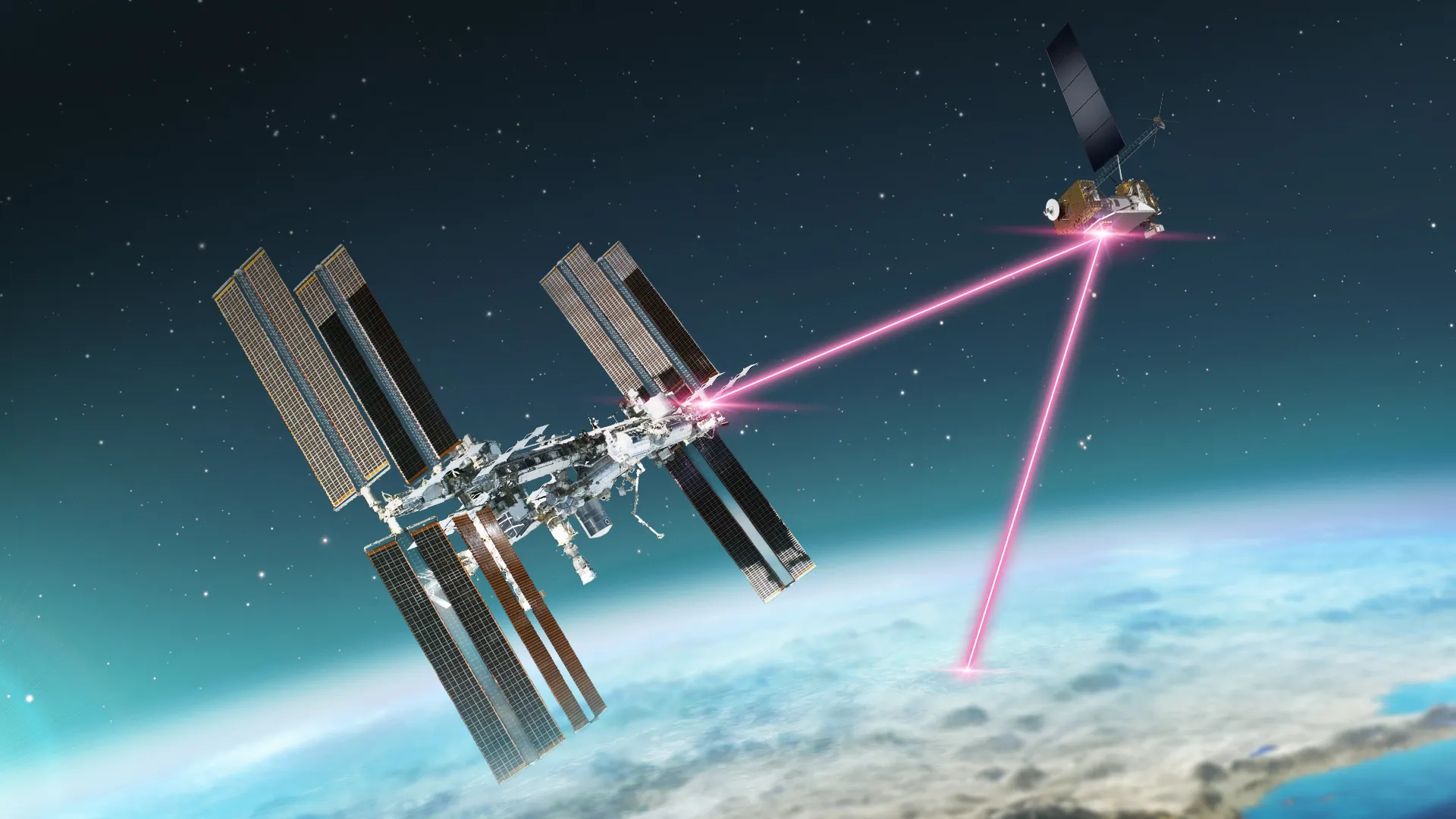
NASA has completed its first laser link with an in-orbit laser relay system, marking a significant advancement in space communication technology.
The successful demonstration of two-way laser communications on Dec. 5 between laser terminals in different orbits could provide a basis for faster communications between Earth and the moon or even beyond.
The experiment has taken years to set up. The Integrated LCRD Low Earth Orbit User Modem and Amplifier Terminal (ILLUMA-T) payload was delivered to the International Space Station (ISS) on November 9, flying aboard a SpaceX Falcon 9 rocket as part of NASA's 29th commercial resupply services mission.
After installation onto the Japanese Experiment Module-Exposed Facility, engineers conducted tests to ensure ILLUMA-T's functionality. ILLUMA-T was then used to communicate with NASA's Laser Communications Relay Demonstration (LCRD) satellite, launched in 2021 and operating high up in geostationary orbit.
Related: Artemis 2 will use lasers to beam high-definition footage from the moon (video)
While the ISS orbits around 230–275 miles (370–460 km) above the Earth, LCRD is orbiting at 22,236 miles (35,786 kilometers) above the equator. This gap allows for a long distance test of laser communications.
Laser communications, also known as optical communications, use infrared light rather than traditional radio waves to send and receive signals. The much shorter, infrared wavelengths of lasers allow much greater amounts of information to be sent with each transmission compared with the longer wavelengths of radio.
Challenges include precisely aligning the transmitters and receivers and making the components small, light and power efficient enough for use in space.
ILLUMA-T and LCRD belong to NASA Space Communications and Navigation (SCaN) program. Using laser communications greatly increases the efficiency of data transfer and can lead to a faster pace of scientific discoveries, according to a NASA statement.
"Laser communications will not only return more data from science missions, but could serve as NASA's critical, two-way link to keep astronauts connected to Earth as they explore the Moon, Mars, and beyond," Dr. Jason Mitchell, director of SCaN's Advanced Communications and Navigation Technology division.
"We are now performing operational demonstrations and experiments that will allow us to optimize our infusion of proven technology into our missions to maximize our exploration and science," David Israel, a NASA space communications and navigation architect, added.






